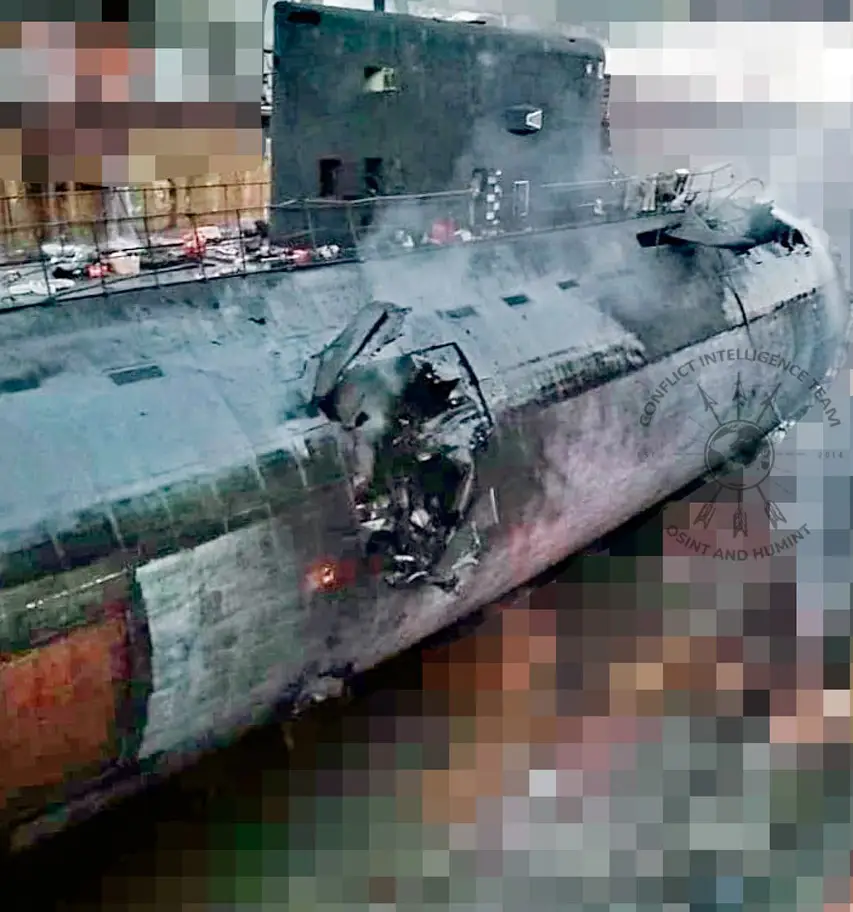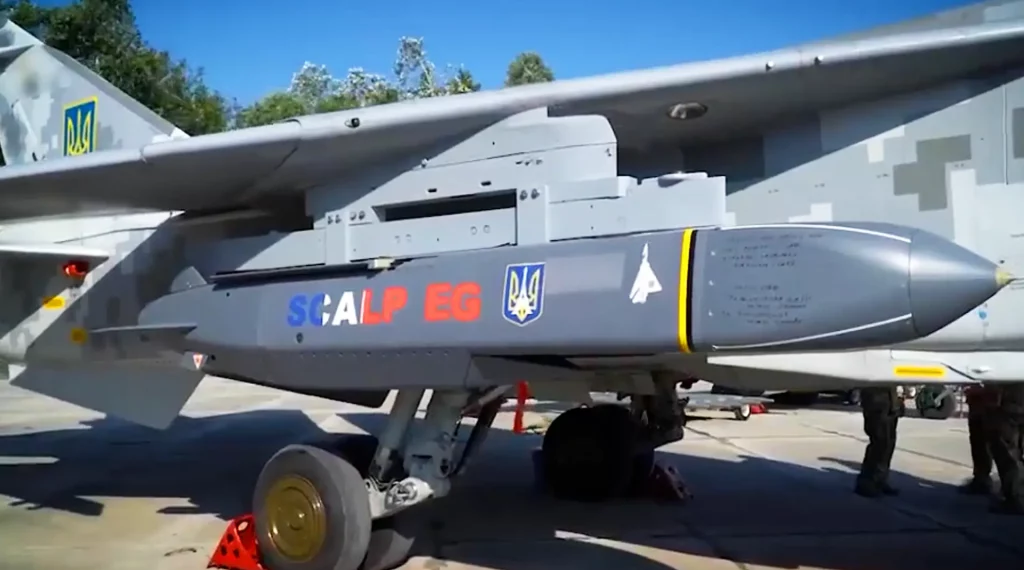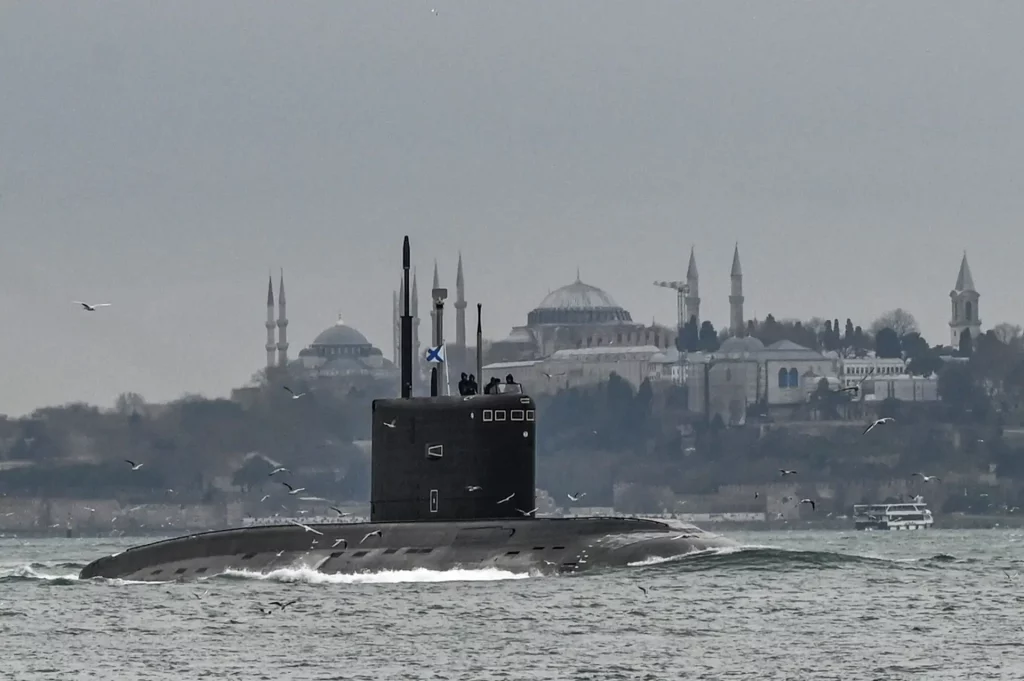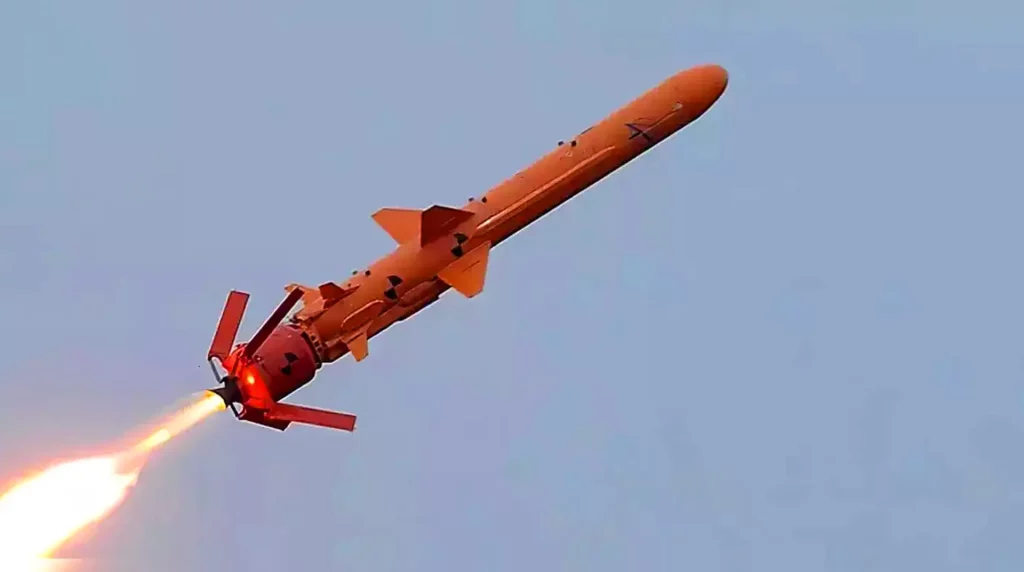Images currently circulating on social media appear to depict extensive damage suffered by a Russian Navy Kilo-class diesel-electric attack submarine following a reported missile strike by Ukrainian forces last week. This Kilo-class submarine, along with a Ropucha-class landing ship, was situated in a dry dock within the Black Sea port of Sevastopol, located in Russian-occupied Crimea. The attack occurred in the early hours of September 13, as detailed in prior reports by The War Zone.

The images, initially made public by the Conflict Intelligence Team (CIT), an independent investigative organization, reveal what seems to be a precise strike to the vessel’s bow, resulting in a substantial breach. Towards the rear of the sail, on the starboard side, there is another significant impact, suggesting potential hull damage, potentially caused by a secondary explosion. Another plausible scenario might involve the detonation of a dual ‘BROACH’ warhead, akin to those carried by the Storm Shadow and/or SCALP-EG cruise missiles, which have been widely reported as being employed in the attack.
Numerous reports, including confirmation from the U.K. Ministry of Defense, point to the submarine in question as the Rostov-on-Don (B-237), an Enhanced Kilo-class vessel belonging to the Project 636.3 class. This submarine is equipped with the capability to launch Kalibr land attack cruise missiles, a type frequently employed against targets in Ukraine. The Rostov-on-Don was commissioned into service in 2014 and is one of four submarines of its class stationed with the Black Sea Fleet.
Irrespective of the specific circumstances, the extent of damage sustained by the submarine strongly implies that it may need to be deemed a total loss. In the most optimistic scenario, a complete reconstruction may be necessary, salvaging any salvageable components, a process that would render the submarine inoperable for a significant period, likely spanning several years. Furthermore, any such repair efforts would almost certainly have to take place outside of the Black Sea, presenting a substantial logistical challenge.
Two authorities in the field of submarine warfare, undersea warfare analyst H. I. Sutton and former U.S. Navy submariner Aaron Amick, both conveyed their belief today via Twitter that the Improved Kilo-class submarine is damaged beyond the possibility of repair.
The photographs in question raise significant doubts about the official Russian statements suggesting that the submarine and the landing ship can be repaired and put back into service. Ukrainian officials had already expressed skepticism, asserting a “high probability” that these vessels are beyond restoration.
Shortly following the attack, satellite imagery from Sevastopol unveiled the extensive and severe damage inflicted upon the submarine and the landing ship. Not only did the vessels themselves show signs of significant fire damage, but the dry dock facility’s overall integrity appeared to be in doubt.
The Russian Ministry of Defense asserted that the attack comprised 10 missiles and three unmanned surface vessels (USVs), often referred to as drone boats, with a claim of successfully intercepting seven of these missiles. There have been allegations that the missiles utilized in the attack were air-launched Storm Shadow and/or SCALP-EG standoff missiles, which can be launched from Ukrainian Air Force Su-24 Fencer strike/reconnaissance aircraft.

In a tweet shortly after the attack, Mykola Oleshchuk, the chief of the Ukrainian Air Force, commended his pilots for their “excellent combat work,” further suggesting the potential involvement of Ukrainian Air Force personnel in the operation.
As previously emphasized, the severity of this attack on the port of Sevastopol, which has been the target of repeated Ukrainian actions since the Kremlin initiated its full-scale invasion of Ukraine, could have significant consequences. It might lead to considerations such as the potential relocation of a portion of the Black Sea Fleet or a reduced utilization of the facilities in the area.
Another pressing concern is Sevastopol’s capacity to conduct maintenance and repairs on Black Sea Fleet vessels, at least until the dry docks at the Sevmorzavod facility housing the submarine and landing ship can be restored to regular functionality.
According to a report from Radio Free Europe/Radio Liberty, the damage to the infrastructure has likely seriously impaired Black Sea naval capabilities for the foreseeable future. This issue is further compounded by the absence of similar facilities for major naval ship repair work elsewhere in the Black Sea region.

The repercussions of the September 13 attack on Sevastopol go beyond the immediate damage inflicted. It highlights the limitations of repair facilities in the Black Sea region, even at ports like Novorossiysk on mainland Russia’s coast, which lack the capability for in-depth submarine maintenance. Floating docks elsewhere in Crimea also fall short in supporting extensive repair work.
Dmitry Gorenburg, an expert from the Washington-based Center for Naval Analyses think-tank, suggests that while the specific strike will impact Black Sea Fleet operations, the cumulative effect may lead to a gradual erosion of Russia’s control over the Black Sea.
Assessing the actual damage to the dry docks remains uncertain. It’s possible that the primary task will involve removing the wrecked submarine and landing ship, potentially followed by minor repairs. However, even this process could prove time-consuming and affect the availability of larger Black Sea Fleet vessels, assuming the dry docks aren’t targeted again.
In the short term, the aftermath of the September 13 attack may lead to reinforced ground-based air defenses around the port and additional measures to counter unmanned surface vessels (USVs), which have been recurrently employed against the facility and Black Sea Fleet warships. Ukraine’s efforts to degrade Russia’s high-end air defenses on the peninsula with long-range strikes could complicate these defensive measures. These strikes seem aimed at disrupting early warning and engagement capabilities for cruise missiles and drones, enhancing their overall survivability. Furthermore, they could enable Ukrainian Su-24s to approach the peninsula more closely for launching SCALP-EG and Storm Shadow missiles over the northwestern Black Sea.
Clearly, Ukraine anticipates further attacks on Sevastopol, potentially including the use of the land attack version of the domestically produced Neptune anti-ship missile—a significant development in the ongoing conflict.

Ukraine’s Digital Transformation Minister, Mykhaylo Fedorov, emphasized to Reuters last week that there will be an increase in drone attacks and other forms of attacks on Russian ships. It’s becoming evident that Russian warships face vulnerabilities while docked in Sevastopol. Moreover, with the maintenance and repair facilities currently incapacitated at that location, any additional damage to vessels will exacerbate the challenges facing the Russian Navy.

